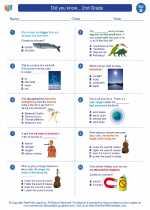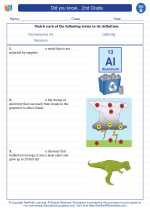Respiratory System
The respiratory system is responsible for the exchange of gases in the body, specifically oxygen and carbon dioxide. It consists of the lungs, airways, and other respiratory muscles.
Structure of the Respiratory System
The respiratory system is composed of the following parts:
- Nose and Mouth: Where air enters the body.
- Trachea: A tube that carries air to the lungs.
- Lungs: Organs where gas exchange takes place.
- Bronchi: Branches of the trachea that lead to the lungs.
- Diaphragm: A muscle that helps with breathing.
Function of the Respiratory System
The main functions of the respiratory system include:
- Gas Exchange: Oxygen is taken in and carbon dioxide is expelled.
- Filtering: The system filters out harmful substances from the air.
- Regulation of pH: The system helps maintain the body's acid-base balance.
- Vocalization: The system allows for the production of sound.
Respiration Process
The process of respiration involves two main stages:
- Inhalation: The diaphragm contracts and moves downward, while the rib muscles contract, causing the chest cavity to expand. This creates a vacuum, drawing air into the lungs.
- Exhalation: The diaphragm relaxes and moves upward, while the rib muscles relax, causing the chest cavity to contract. This forces air out of the lungs.
Respiratory System Study Guide
- What are the main organs of the respiratory system?
Answer: The main organs are the nose, trachea, lungs, and diaphragm. - What is the function of the respiratory system?
Answer: The main function is the exchange of gases, specifically oxygen and carbon dioxide. - Describe the process of respiration.
Answer: Respiration involves inhalation, where air is drawn into the lungs, and exhalation, where air is expelled from the lungs.
By understanding the structure and function of the respiratory system, you can appreciate the importance of breathing and maintaining healthy lungs.
.◂Science Worksheets and Study Guides Second Grade. Did you know... 2nd Grade
Study Guide Did you know... 2nd Grade
Did you know... 2nd Grade  Worksheet/Answer key
Worksheet/Answer key Did you know... 2nd Grade
Did you know... 2nd Grade  Worksheet/Answer key
Worksheet/Answer key Did you know... 2nd Grade
Did you know... 2nd Grade  Worksheet/Answer key
Worksheet/Answer key Did you know... 2nd Grade
Did you know... 2nd Grade  Vocabulary/Answer key
Vocabulary/Answer key Did you know... 2nd Grade
Did you know... 2nd Grade 

 Worksheet/Answer key
Worksheet/Answer key
 Worksheet/Answer key
Worksheet/Answer key
 Worksheet/Answer key
Worksheet/Answer key
 Vocabulary/Answer key
Vocabulary/Answer key

The resources above cover the following skills:
Earth Systems Science
Weather and the changing seasons impact the environment and organisms such as humans, plants, and other animals. Students can:
Analyze ways in which severe weather contributes to catastrophic events such as floods and forest fires